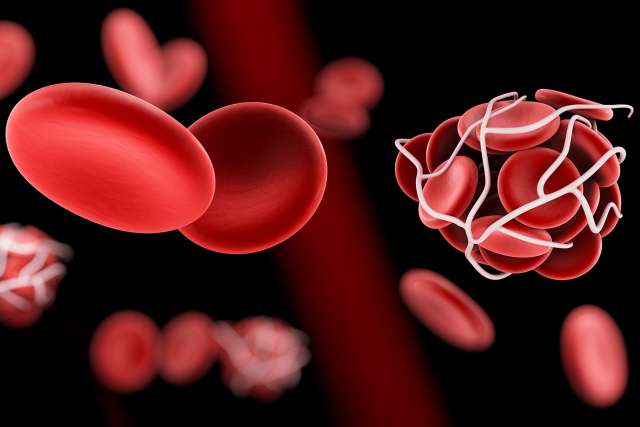IVC Filter Clinic
Our interventional radiologists use advanced, minimally invasive techniques to place or remove inferior vena cava (IVC) filters. We treat a range of problems affecting IVC filters, including blood clots.

Why choose the UCLA Health IVC Filter Clinic?
The IVC Filter Clinic at UCLA Health is dedicated to caring for patients with blood clots and IVC filters. We’re recognized nationally and internationally as one of the leading clinics for IVC filter removal. We can remove filters that have been in place for years, or after previous failed removal procedures. Our team includes board-certified interventional radiologists who are experts in using leading-edge imaging and equipment to place and remove IVC filters for blood clots.
Highlights of our program include:
Advanced treatment: We use the most advanced technology to guide the placement, management and removal of IVC filters. Our specialists focus on safely preventing blood clots from traveling to the heart and lungs. The clinic receives referrals from around the country and world for complicated IVC removals.
Comprehensive care: Our interventional radiologists conduct an extensive workup to determine if an IVC filter placement or removal is needed. We also provide meticulous follow-up to monitor the devices and determine if and when they need to be removed.
Personalized treatment: IVC filters can be important, lifesaving treatments. But they shouldn’t always stay in place forever. We perform a comprehensive evaluation to customize the treatment plan that is right for you.
Research focus: Participation in research and clinical studies allows us to continually learn, develop and implement the most effective treatment techniques. Eligible patients may have access to new technology through clinical trials.
What is an IVC filter for blood clots?
An inferior vena cava (IVC) filter is a small metal device placed in the IVC, a large vein in the middle of the body. The vein brings blood from the lower part of your body to the heart and lungs. An IVC filter traps blood clots to keep them from moving from the legs to the heart or lungs.
Typically, providers treat deep vein thrombosis with blood-thinning medications. However, for patients who cannot take blood thinners or do not respond to them, we may place the filter into the inferior vena cava.
Conditions we treat with IVC filters
We may place an IVC filter to treat conditions such as:
- Deep vein thrombosis (DVT): Blood clots that form in the legs. Part of a clot can break off and travel to the lungs.
- Pulmonary embolism (PE): A blood clot in the lungs, often traveling there from the legs. A PE blocks blood flow to the lungs and is a life-threatening medical emergency.
Our specialists may also offer treatment for issues affecting the IVC filter itself, including:
- IVC migration: This is when all or part of the filter moves to the heart and lungs.
- IVC filter fracture: The legs of the IVC break off and can travel to other areas.
- IVC thrombosis: Clots form in the IVC around the filter, blocking blood flow.
- IVC occlusion: Occlusion occurs when the IVC becomes blocked by a blood clot (thrombosis) that’s been in place for a long time.
- IVC penetration: This is when parts of the IVC filter work their way through the blood vessel wall.
Treatments we offer
IVC filter specialists provide a variety of treatments, including:
Clot removal: We use endovascular techniques to remove clots in the IVC or pelvic veins. Our specialists use a long, hollow tube (catheter) to reach blood vessels and safely deliver clot-busting medicines (thrombolysis) or extract blood clots (thrombectomy).
IVC filter placement: The interventional radiologist inserts a catheter through the neck or groin and guides it to the IVC. They inject a contrast dye into the vein to clearly view where to place the filter. Then they guide the filter through the catheter and position it in the optimal location. Once released, the filter expands and attaches to the blood vessel walls.
IVC filter removal: When an IVC filter is no longer necessary, our specialists use a variety of advanced techniques to remove it. Interventional radiologists insert a catheter into a vein in the neck or groin and guide it to the IVC. The filter has a small hook that allows the doctor to pull the filter up through the catheter to remove it. Most patients return home the same day as a filter removal.
Our expert team
Our specialists are experts in IVC placement, evaluation and removal. We use a range of advanced filter removal techniques not widely available elsewhere. We comprehensively assess each patient’s unique needs to create customized care plans.
Directors
Our Physicians
Administrative Specialist

Brianna Gaytan
Nurse Practitioners
- Wendy Nelson
- Heidi Clauson
- Jhoanna Anuran-Torres
- Sam Tangchaiburana
Clinic Schedulers
- Fernando Reyes
- Alice Wilson
- Gretel Lambey
- Ronetta Jackson
Procedure Schedulers
- Jackie Bartlett
- Oudrey Monzon
- Ivette Yoshinga
Contact us
Call 310-481-7545 to request an appointment with an IVC filter specialist at UCLA Health.
Find your care
Our clinic is nationally and internationally renowned for IVC filter removal. Call 310-481-7545 to learn more about the IVC Filter Clinic at UCLA Health.









